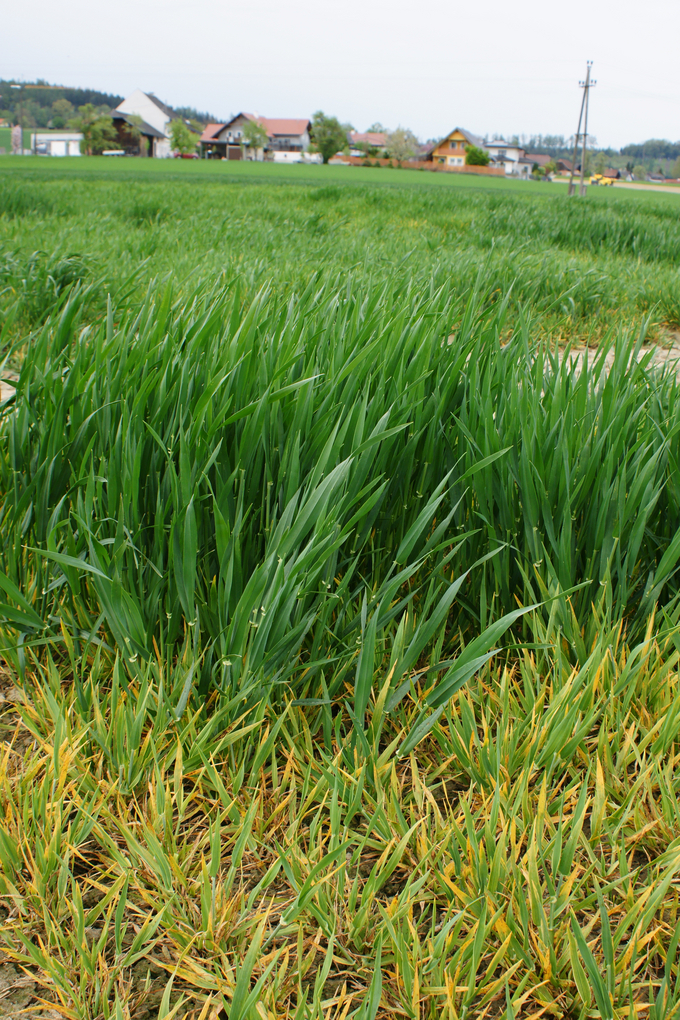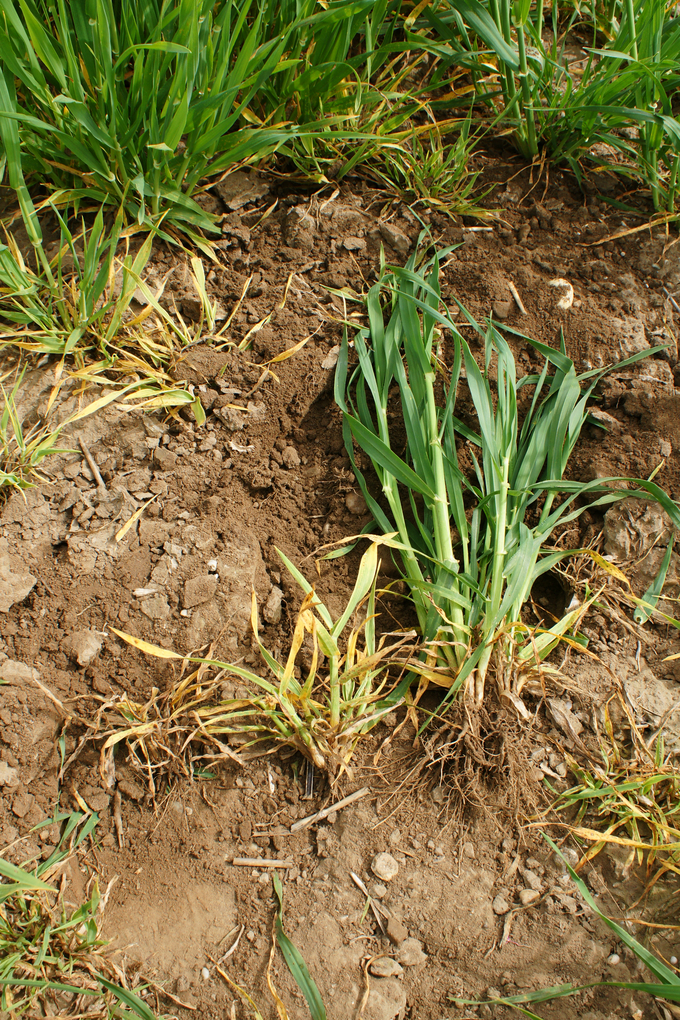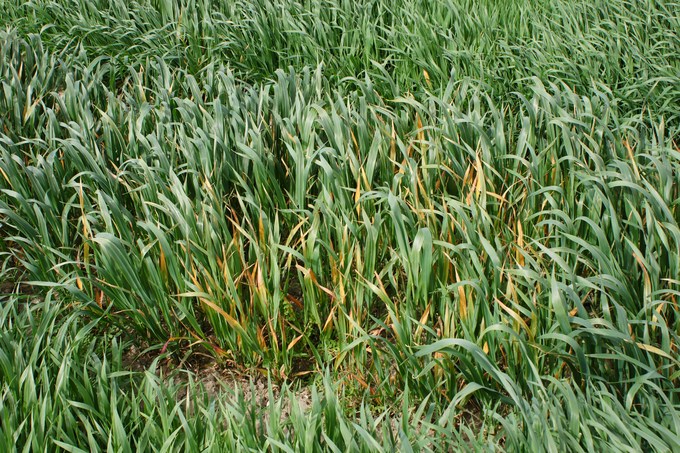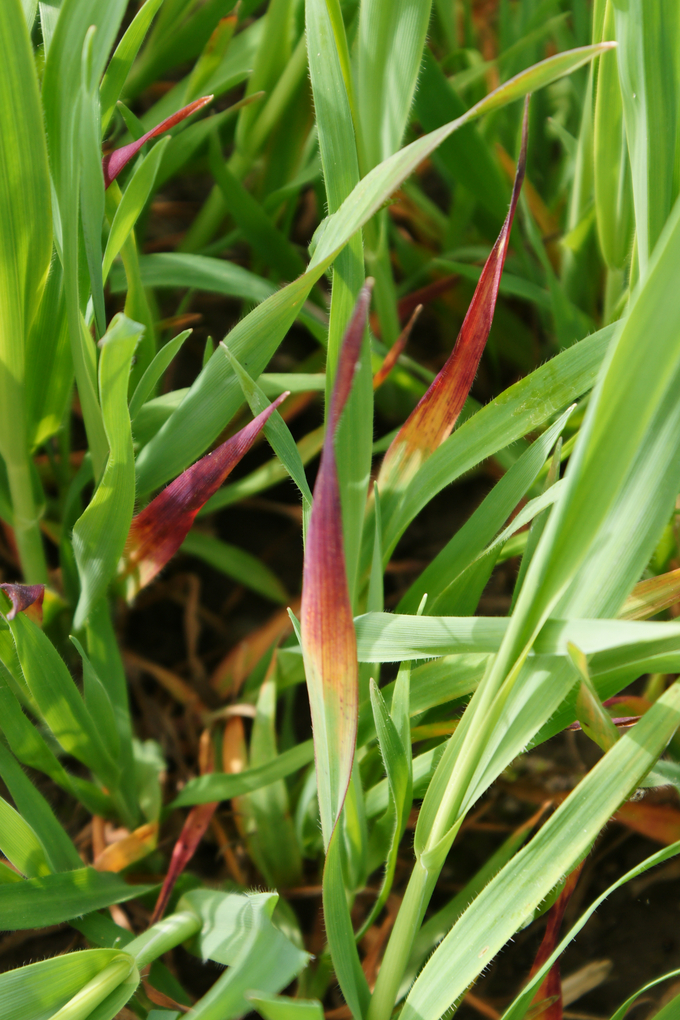Barley yellow dwarf
Barley yellow dwarf virus
Biology
Cereal yellow dwarfing is caused by the yellow dwarfing viruses. This is a collective term for Barley yellow dwarf virus (BYDV) and Cereal yellow dwarf virus (CYDV). These are further subdivided into different serotypes, each of which is mainly transmitted by one aphid species. The greatest damage occurs in early-planted winter barley (which is why it is often referred to only as barley yellow dwarf), but all other cereals, corn, and many grass species, especially pasture grasses, can also be infected. Rye and triticale are the most resistant.
Damage symptoms
Dwarfism and general changes in the appearance of the plants combined with discoloured and partially deformed leaves are conspicuous. Deaf ears also develop. The first symptoms can already be seen in autumn in early-grown cereals. In winter barley, the dwarfing is more pronounced than in winter wheat. If barley is severely stalked, there is increased tillering and the result is a grass-like appearance. Streaky lightening between the leaf veins and on the leaf edges is also typical. Oats and wheat, on the other hand, hardly tiller at all and the flag leaves are reddish-purple in colour. Yellow dwarfing usually occurs in nests, but whole fields can be infected if the infestation is severe.
Propagation and transmission
Barley yellow dwarf virus is transmitted by aphids. A total of more than 24 aphid species are known to be possible carriers, including the pale cereal aphid(Macrosiphum dirhodum). According to literature, the aphids need one to twelve hours of sucking activity to take up the virus from infested plants. After one to two days of residence time of the viruses in the body of the aphids, the virus can be transmitted by these animals throughout their life. Virus transmission occurs after several hours of sucking on plants.
Incoming aphids infect the cereal plants and the offspring of these aphids can spread the disease in the crop. The longer the aphids have time to reproduce, the larger the infested areas become. Aphid immigration and reproduction is encouraged by mild and dry weather in the fall. Significant sources of infection in the fall are infected volunteer cereals, corn, but also grasses on grassland, field margins and weeds.
Economic importance
In the past, yellow wilt of cereals was observed annually on winter cereals, especially in the Pannonian region. In the meantime, large losses due to this disease can be expected in all cereal-growing regions and for all cereal types if mild weather persists in the fall. Heavily infested winter crops usually have to be turned over in spring.
Prevention and control
- Avoidance of extreme early sowing of winter cereals is the best protection against fall infections
- Careful control of volunteer cereals before the emergence of winter crops
- Maintenance of field and roadsides
- Reduction of infestation through gap-free and rapid emergence of winter tillage (aphids prefer to fly into gaps)
- Early cultivation of summer tillage (in contrast to winter tillage)
- Control of aphids by insecticidal spray treatments in the stand (see list of plant protection products approved in Austria)
Specialized information
Since 2019, cereal virus monitoring has been carried out by the chambers of agriculture in cooperation with us. Interested farmers can get an overview of the virus situation in their region and, if necessary, postpone the cultivation date.
Last updated: 02.05.2024
automatically translated




